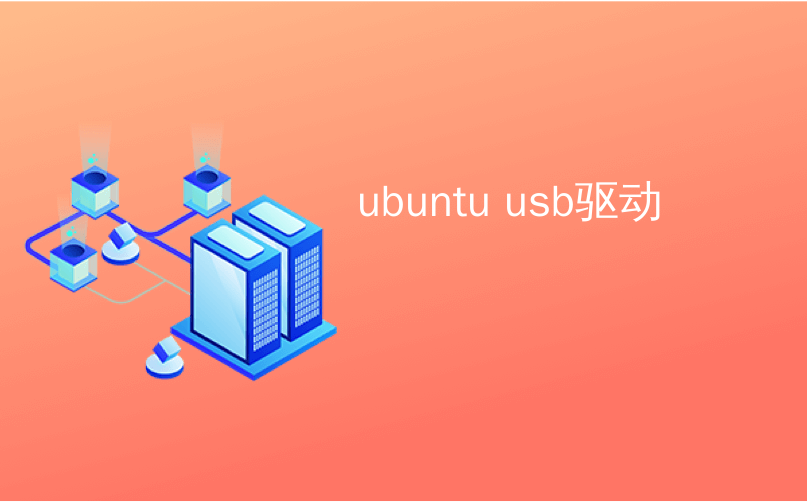
ubuntu usb驱动

A Linux live USB drive is normally a blank slate each time you boot it. You can boot it up, install programs, save files, and change settings. But, as soon as you reboot, all your changes are wiped away and you’re back to a fresh system. This can be useful, but if you want a system that picks up where you left off, you can create a live USB with persistent storage.
每次启动时, Linux活动USB驱动器通常都是空白。 您可以启动它,安装程序,保存文件并更改设置。 但是,重新启动后,所有更改都会消失,而您又回到了全新的系统。 这可能很有用,但是如果您想要一个从上次中断的地方接机的系统,则可以创建具有持久性存储的实时USB。
永久存储如何工作 (How Persistent Storage Works)
When you create a USB drive with persistence, you’ll allocate up to 4 GB of the USB drive for a persistent overlay file. Any changes you make to the system—for example, saving a file to your desktop, changing the settings in an application, or installing a program—will be stored in the overlay file. Whenever you boot the USB drive on any computer, your files, settings, and installed programs will be there.
创建具有持久性的USB驱动器时,您将为持久性覆盖文件分配最多4 GB的USB驱动器。 您对系统所做的任何更改(例如,将文件保存到桌面,更改应用程序中的设置或安装程序)都将存储在覆盖文件中。 每当您在任何计算机上启动USB驱动器时,文件,设置和已安装的程序都将存在。
This is an ideal feature if you want to keep a live Linux system on a USB drive and use on different PCs. You won’t have to set up your system up from scratch each time you boot. You don’t need persistence if you’re just using a USB drive to install Ubuntu and then running it from your hard drive afterward.
如果要将活动的Linux系统保留在USB驱动器上并在其他PC上使用,则此功能非常理想。 您无需在每次引导时从头开始设置系统。 如果你只是使用USB驱动器安装Ubuntu,然后从硬盘驱动器运行它之后你不需要持久性。
There are a few limitations. You can’t modify system files, like the kernel. You can’t perform major system upgrades. You also can’t install hardware drivers. However, you can install most applications. You can even update most installed applications, so you can be sure your persistent USB drive has the latest version of the web browser you prefer.
有一些限制。 您不能修改系统文件,例如内核。 您无法执行主要的系统升级。 您也无法安装硬件驱动程序。 但是,您可以安装大多数应用程序。 您甚至可以更新大多数已安装的应用程序,因此可以确保永久性USB驱动器具有您喜欢的最新版本的Web浏览器。
Persistence doesn’t work with every Linux distribution. We’ve tested it with the latest versions of Ubuntu—Ubuntu 18.04 LTS and Ubuntu 19.04—and it works. It should also work with Ubuntu-based Linux distributions. In the past, we had luck with Fedora as well. Just download the appropriate ISO file and follow the instructions below.
持久性不适用于每个Linux发行版。 我们已经使用最新版本的Ubuntu(Ubuntu 18.04 LTS和Ubuntu 19.04)对其进行了测试,并且可以正常工作。 它也应该与基于Ubuntu的Linux发行版一起使用。 过去,我们也对Fedora感到幸运。 只需下载适当的ISO文件,然后按照以下说明进行操作即可。
Update: Rufus, which we recommend for easily creating live USB drives on Windows, now supports persistent storage in its latest versions. Previous versions did not, necessitating the below process. Give Rufus a try if you’re using Windows and want to avoid the Linux command line process below.
更新 : 建议使用 Rufus,以便在Windows上轻松创建活动USB驱动器 , 现在支持最新版本的持久存储 。 以前的版本没有,因此需要以下过程。 如果您使用Windows,并且想避免下面的Linux命令行过程,请尝试Rufus。
如何在Ubuntu上制作持久的Ubuntu USB驱动器 (How to Make a Persistent Ubuntu USB Drive on Ubuntu)
You’ll need a computer already running Ubuntu to perform this process. You’ll also need a USB drive with enough storage capacity to set up persistence. We used a 16 GB drive, but an 8 GB drive would have worked as well. The bigger the drive, the more persistent storage you can have.
您需要一台已经在运行Ubuntu的计算机来执行此过程。 您还需要具有足够存储容量的USB驱动器来设置持久性。 我们使用了16 GB的驱动器,但也可以使用8 GB的驱动器。 驱动器越大,您可以拥有的持久性存储越多。
The grub, boot and Ubuntu partitions take up less than 2 GB. The remainder of








 最低0.47元/天 解锁文章
最低0.47元/天 解锁文章















 3948
3948











 被折叠的 条评论
为什么被折叠?
被折叠的 条评论
为什么被折叠?








